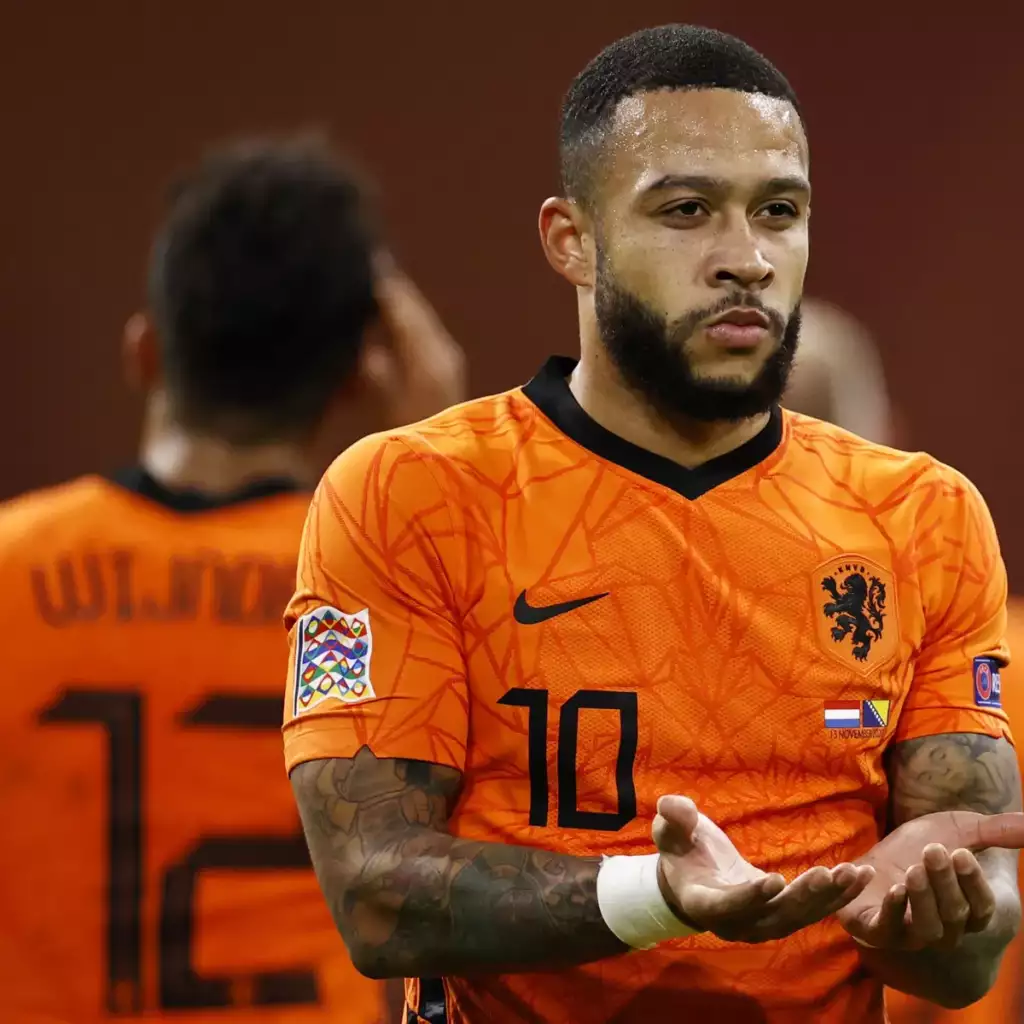

USMNT
GROUPED OR GLORY: Group A
Published
3 years agoon

Qatar | Elo: 49 | FIFA: 50 |
History: On December 2nd, 2010, The International Federation of Football(FIFA) declared that Qatar would host the Middle-East’s first Coupe du Monde. The decision sparked outrage, a bevy of accusations, and a steady stream of controversy, obscuring one of the more remarkable on-field turn-arounds in international football. When Al Enabbi were awarded the crown jewel of sport, The Maroon were ranked 114th(FIFA) having managed just 1 win across 8 games in the final round of AFC – The Asian Football Confederation – World Cup Qualification. Less than a decade later, Qatar were the champions of Asia, ranked 55th after a shock title run featuring wins over heavyweights UAE, South Korea, and Japan. In 10 Asian Cups before the 2019 edition, Qatar had managed a paltry 6 wins, garnering 27 points from 32 outings. In 2019, they won all 7 fixtures, scoring 19, and conceding once.
A British protectorate until 1971, Qatar was a relatively late-comer to international soccer, opening its football program with a 2-1 loss to fellow ex-protectorate Bahrain. Qatar would gain independence a year later, making The Maroon eligible for World Cup Qualification in 1974. Qatar withdrew in 74 but would debut 4 years later in the 78 tournament with a 2-0 win against… Bahrain; they lost their next 3 matches – including a 3-0 defeat to the Bahrainis – and finished last. They’d fall well short in 82; but managed to beat Bahrain a 2nd time in Bahrain’s only qualification match. It was the 81 U20 World Cup where Qatar made its first real mark reaching the final after wins against England and Brazil with a team developed by Qatar’s storied Aspire Academy. 8 years later that generation reached its zenith coming within a point of the 1990 World Cup. They came close again in 98 and picked up their first piece of silverware in the 92 Arabian Gulf Cup where they finished 2 points clear of 2nd place… Bahrain.
Amid a deepening pool of Asian teams, and a limited talent pool, Qatar returned to mediocrity in the 2000’s. With political incentives for Qatari soccer to improve, The Qatar Football Association took a more unconventional approach to team building. Aspire Academy started tracking young players across the world as Qatar’s government broke its own citizenship laws to naturalize the most talented kids they could find. Aspire Academy would end up tracking millions of players. For a country with a population that barely passed 1 million, this meant artificially multiplying the talent base several times over. Though not without controversy, this approach proved remarkably effective with Aspire Academy’s work laying the seeds for unprecedented highs.
This November we’ll see the culmination of one of football’s most ambitious projects. Qatar are good now. They’ll have a chance to show how good. Was 2019 a peak? Or was it the precursor for something greater?
The world is watching. For better or worse, Qatar is in its eye.
Expected Finish: 2nd
Why?
Hosts do well. All but one host nation in this near century-spanning tournament has successfully reached round two. Of the 7 hosts who had never advanced past round one, only one fell at the first hurdle. That casualty was South Africa – ranked 63(Elo) – who missed out, via tiebreaker, in a group with reigning finalists France, eventual semi-finalists Uruguay, and perennial progressors El Tri. According to Elo and FIFA, Qatar is significantly better than South Africa was. They also face, arguably, the easiest set of opponents in the tourney.
Qatar’s players have also played together, alot. Not only do all 26 call-ups play in the same league, but this roster is virtually identical to the one we saw in the 2019 Asian Cup, the 2021 Copa America, and the 2019 CONCACAF Gold Cup. Beyond that, all of these players developed together in the Aspire Football Academy meaning most of them have been learning how to play with each other for more than a decade. Simply put, It’s possible the players of The Maroon will have the best chemistry of any national team that has ever participated in a World Cup Finals.
Qatar demonstrated proof of concept with their performance in the 2019 Asian Cup. Winning is one thing, perfection is another. Qatar were the first team to win every game at the Asian Cup since 1974, where Iran won 4 games to clinch a 6 team tournament headlined by relative minnows Kuwait and China. Qatar won 7 out of 7 games to clinch a 16 team tournament featuring maybe the deepest pool of quality teams to ever grace the continent. In other words, the last time Qatar played in the Middle East, they put together, arguably, the most impressive continental performance in Asian history. For comparison, perceived favorites Senegal received much acclaim for an AFCON – African Cup of Nations – win where they played much weaker opponents and fared significantly worse.
Many-a pundit view The Maroon as minnows. I disagree.
Why not?
The 2019 Asian Cup was a while ago. More recent showings aren’t as promising. In the 2019 Copa America they finished last in a group with Argentina, Colombia, and Paraguay. The latter two failed to qualify; Paraguay didn’t even come close. South America is tough, but Ecuador managed.
Their most recent set of competitive games came in the 2019 CONCACAF Gold Cup hosted – and won – by the USMNT(United States Men’s National team). At first glance, they did ok; reaching the semi-final and losing to the eventual champion – in unlucky fashion – at their opponent’s backyard. Context paints a different picture. Qatar was one of a handful of sides to send a full-strength team to North America. They beat Honduras and Grenada – two teams who fell well short of world cup qualification – convincingly, tied a Panamanian team depleted by injury, and were an offside-call away from blowing a 3-goal lead to non-qualifier El Salvador. In the semi-final they faced a team of American reserves, succumbing to an attack spearheaded by Matthew Hoppe; currently playing left-bench with championship side Middlesborough.
Qatar look good when their opponents sit-back and give Qatar space. They look less good when the opposition pushes their lines and presses Qatar’s playmakers. This was the story of their matches against El Salvador and the US where they were dominant in the first half and got overrun in the second. They’re particularly vulnerable in transition and their three group-mates all have an abundance of pace.
There’s also a deficit in player quality. Qatar ranks 32 of 32 in both of our talent measures; away from home, they’ve looked the part.
The good news is these games are at home. While there is certainly a case against The Maroon, I’m banking on history.
Key Players
2019 Asian footballer of the year, Club World Cup bronze medalist, and arguably the greatest player in the history of the Qatar Stars league, Akram Afif is Qatar’s best player(ever). A phenomenal playmaker, neat on the ball, and a threat to score from just about anywhere, Afif will need to perform for Qatar’s offense to click. Afif has appeared 9 times in La Liga for Sporting Gijon making him the only player in the pool with top league experience.
Almoez Ali is one of the few players, ever, to be the top scorer of two continental competitions; in two separate continents. He won the golden boot – and was named best player – at the 2019 Asian Cup with a record-breaking 9 tallies. 2 years later, at the 2021 CONCACAF Gold Cup, Almoez scored 4 times in 5 games to be top scorer again. Ali was also named to the IFFHS AFC Men’s Team of the Decade to go along with an undisputed case as Qatar’s lead talisman. With 42 goals in 85 appearances, the Al Duhail striker will need to produce for Qatar to advance. Ali’s also a decent bet for goal of the tournament.

Netherlands | Elo: 4 | FIFA: 8 |
History: Behold The Oranje. With three appearances in the final, and no appearances at the winner’s podium, the Dutch are uncontested as the World Cup’s greatest bridesmaid. They are one of six national teams to reach the final three separate times. They are one of seven national teams to reach five semi-finals; but they are not one of the eight teams to hoist the Jules Rimet. What they’ve done is actually harder than just winning it all, even if it’s less satisfying.
Recent heart-breaks have been particularly potent. In 2010, entering South Africa as a dark horse, The Flying Dutchmen – literally at times – huffed and fouled their way to a perfect finals run – including a come-back win against No.1 ranked Brazil – before succumbing in overtime to No.2 ranked Spain. 2014 started sweetly, with a flying dutchman putting La Roja to the sword. The dish turned sour in the semis in a shoot-out loss to the Argentines. 2018 ended before it began. Needing a top two finish in a qualification group with two eventual quarterfinalists, The Oranje could only manage third. Their female counterparts had an inspired run to the 2019 World Cup final where they… lost to an American juggernaut.
Before the Dutch were bridesmaids, they were minnows, combining for 2 appearances – and 0 points – for the first 40 years of the Wereldbeker. Then, upon a Cruyff-faced wave, the Dutch entered 74 as the favorite. They lost… in the final. They entered 78 without Cruyff and reached the final once more; then lost to Argentina. While The Oranje’s style of play – the quintessential example of positional football – left a legacy so strong that the 74 and 78 Dutch sides are still regarded as one of the greatest teams ever, winners they were not. I would be remiss not to mention that the Dutch managed a singular European triumph in 88, but that’s really not the same.
Once more the Dutchmen will swim against a tide, and once more they will dare to escape it. Will the soccer gods finally smile down on Johan’s children?
Expected Finish: 1st
Why?
They are the most talented team, ranking top 10 in both TMV and WCDCS. They have been the best team, ranking top 10 in Elo and FIFA. They are undefeated in 15, have won their last six group games in their competition, and have a stronger track record at this tournament than the other three teams combined.
Why wouldn’t you pick them?
Why not?
Qualification was not easy. A loss to Turkey along with ties against Norway, Scotland, and Montenegro put the Netherlands in a precarious position in their final qualification match. Needing to not lose, the Dutch comfortably beat Haaland-less Norway, thereby booking their ticket to Qatar. That might be less impressive than Ecuador booking qualification from South America with games to spare.
The Netherlands also can’t say they’re continental champions, having lost to the Czech Republic in the Round of 16 at the 2021 European Championship. Perhaps they’ll falter before the champions of Asia and Africa.
While the Dutch aren’t allergic to build-up, they’re often direct. Transition offense is typically less effective when opposing defenses leave less space behind. Both Senegal and Ecuador leave extra players back when they attack. This makes both unusually difficult to break down. Ecuador in particular has a knack for peeling off points from more talented teams.
The Dutch are clear favorites, but they are not invincible.
Key Players
Barcelona starlet Frenkie de Jong may be the Netherland’s most essential piece for successfully surviving this phase of the competition. Facing two sides that usually give little, the Netherlands will rely on de Jong being a reliable metronome in the middle of the pitch. Gifted with the ball, and a strong orchestrator under pressure, Netherlands may well rely on Frenkie’s progression and ball-security to successfully navigate the group stage.
Matthijs De Ligt is world class. An attacking midfielder in his youth, De Ligt is the center-back equivalent of a 5-tool player. He’s a great passer, is strong and fast. Is excellent positionally, and is a threat in the air. In 2018 De Ligt won the golden boy awarded to Europe’s most impressive young player. In 2022, the 23 year old already has a strong claim as The Oranje’s best player. If there is to be total triumph in Qatar, Matthijs will have to deliver.

Senegal | Elo: 43 | FIFA: 16 |
History: Enter the African Champion. In 2002, the Lions of Teranga conjured magic. As France fell, Senegal soared, becoming the second African team to reach the quarter-finals. In 2022, Senegal carries the hopes of a continent. The world still waits for an African semi-finalist. To many, Senegal is the continent’s best hope.
Senegal won independence from France in 1960. The Senegalese Football Federation(FSF) formed later that year. In 1963 Senegal joined the Confederation for African Football(CAF), before debuting at the African Cup of Nations in 1965. With a win, a draw, and a loss, Senegal finished 4th. In 1968, they repeated that trick to finish 5th. They entered World Cup Qualification in 1970; their debut came in a two-legged playoff against Morocco where a 1-goal win for each country turned a two-legged tie into a three-legged tie. Morocco won game three. In 1974 Senegal ran into Morocco again, and again, the lions fell.
Senegal wouldn’t progress past the first round of qualification until the format changed in 1994. After winning their group in round one, they were drawn with Zambia and… Morocco. Morocco finished first to qualify. Senegal finished last. In 1998 they went back to falling at the first hurdle, losing a two-legged playoff to Togo. They returned to the second round in 2002, via a narrow win against Benin, only to be grouped with CAF heavy weights Algeria, Egypt, and… Morocco. To qualify for the World Cup Finals, the Lions of Teranga would need to win their group. And so they did. With a record of 4 wins, 3 draws, and 1 loss, Senegal finished with 15 points, scraping by their long-time tormentors on goal-difference. The rest is history.
Alas, 2002 was a flash. Senegal failed to qualify for the next three tournaments, only returning to the Coupe du Monde in 2018, on the crest of a golden generation headlined by Sadio Mane. In Russia, they would miss out by the slimmest of margins, becoming the first team to be eliminated from the group stage on yellow card accumulation. In 2019, the lions reached their first AFCON final, only to lose on penalties. In the 2021 AFCON, Senegal faced another finals shootout. This time they won; Sadio Mane scored the winning kick. Senegal won another shoot-out to qualify for Qatar, making consecutive world cups for the first time in their history. Sadio Mane, once again, scored the winning kick.
And so enters the African champion, on the wings of a generation more talented than any that came before, carrying the weight of a continent.
Will they rise? Or will they crumble?
Expected Finish: 3rd
Why?
Senegal have talent, experience, and a favorable group. What they don’t have, is results. A win against Poland in 2018 has largely buoyed their FIFA ranking, but when we turn to the more reactive measure of Elo, we see they’ve dropped to 43rd. Yes Senegal are the champions of Africa, but only two African champions have ever progressed from the group-stage.
If we look at how Senegal became the champions of Africa, the Lions of Teranga don’t look so good. In a group with Malawi(140th), Zimbabwe(130th), and Guinea(110th), Senegal’s only goal was a 97th minute penalty. For reference, let’s take a look at Canada(29), a team that finished first in qualification from a region where winning continentally actually translates abroad. When Canada faced comparably ranked Suriname(127th), they won by four. When Suriname faced lower ranked Bermuda(160th), they won by six. Bermuda’s ranking may undersell them. Nakhi Wells is probably a better player than anyone on Malawi or Zimbabwe.
Egypt(53rd) is the best team Senegal have faced in a meaningful match over the last two years. In three games against this colossus, Senegal won(1-0), tied(0-0), and lost(1-0). If this was a three-legged tie, it would have gone to penalties. Of course, there aren’t shoot-outs in the group stage. If Senegal can’t score, they will not win.
To make matters worse, Sadio Mane is injured. For a team that barely scores with one of the best attackers on the planet, missing Mane may prove difficult.
Even without Mane, Senegal are still, theoretically, good enough. But as many-a African side can attest, theory doesn’t get you out of the groups.
Why not?
Senegal have talent, experience, and a favorable group. The Lions of Teranga rank top 16 in both TMV and WCDCS. This is also effectively the same team that played in the last World Cup, the last two AFCON’s, and the last two World Cup qualifying cycles.
Even without Mane, Senegal has a number of players at the best clubs of Europe. They should be as ready for this stage as anyone. Mane also isn’t entirely ruled out for the tournament.
Senegal has the pieces to succeed. But the puzzle hasn’t quite come together.
Key Players
Formerly named the best defender in Italy, and a 4-time participant on the Serie A team of the year, Kalidou Koulibaly is the centerpiece for one of the world cup’s more resolute defenses. With a rare combination of strength, agility, and skill, the Chelsea center-back is obviously very good. What may not be so obvious is Koulibaly’s value in attack. Senegal’s offense is largely based on playing long passes to runners. A big reason why Senegal are so hard to score on is that the lions often avoid throwing up numbers when they attack. This means that most of Senegal’s ball-progression stems from accurate deep-lying passes. Senegal’s best deep-lying passer is… Kalidou Koulibaly. Koulibaly will need to perform for both Senegal’s defense and offense to click.
Sadio Mane is a world-class attacker. One of the key pieces for a historically great Liverpool side, Mane’s injury is a big blow. While the floor won’t necessarily fall out, Mane’s health will determine Senegal’s ceiling. Assuming it all comes together, the lions have enough to survive their group without Mane. Anything else is a big ask. If Senegal is to break through and become the first African representative in a World Cup semi-final, they’ll probably need Mane to make a quick return.

Ecuador | Elo: 44 | FIFA: 18 |
History: On May 30th, 1925, the Federación Deportiva Nacional del Ecuador, was founded. Shortly after, La Tricolor were granted an automatic invitation to the first World Cup. Ecuador declined. On June 2nd, 2002, La Tri got their first taste of World Cup football, more than 70 years later, in a 2-0 loss to Italy.
Drinking from the well seems to have made La Tri greedy. 2022 will mark their 4th successful qualification in 6 attempts. Considering they play the world’s most difficult qualifiers, it’s a remarkable accomplishment.
More remarkable is the fact they’ve won, at least once, at each finals they’ve participated in. In 2002, they won twice, progressing to the round of 16 with emphatic victories over Costa Rica and Poland. England ended their run in the knockouts, but the tournament was indisputably a success.
Ecuador’s journey to the finals was arduous. 62 marked La Tri’s maiden campaign. Put in a home and home playoff against Argentina, Ecuador were lost by a combined scoreline of 11-3 after a trashing in Guayaquil, and a massacre at Buenos Aires. 66 went significantly better. With two wins against Colombia, Ecuador finished level on points with Chile. A one-off playoff on neutral ground would decide qualification. Ecuador lost 2-1. They wouldn’t win another qualifier until 1982 picking up a paltry 4 points from 12 matches. 98 marked the first time they’d strung together 2 wins in a single campaign as they finished only 4 points off the last qualification spot. That qualification spot was occupied by… Chile. 94 was particularly pathetic. Coming off a best ever 4th place finish in the 93 Copa America, Ecuador won one of 8 qualifiers.
2002 went differently. Having won 11 times in their first 55 qualification matches, La Tri won 9 of 18 to finish 2nd and cruise to their first finals. Their path to Qatar was similar with Ecuador winning 7 of their first 14 to help book an early ticket to Doha.
With the 4th youngest team in the tournament, a cadre of promising prospects, and a general sense that La Tri-color are more than the sum of their parts, there is plenty to be excited about…
…but is there enough to win?
Expected Finish: 4th
Why?
Ecuador’s track record in qualification is impressive, particularly at home where they won 5 times while losing only once. What they’ve managed away from home is more concerning. In qualification they only managed 2 wins away from La Casa Blanca. Both came against teams that failed to reach the World Cup. They haven’t fared much better on neutral ground, picking up no wins in 5 matches at the most recent Copa America.
While Ecuador has historically been characterized as a team that plays fun, attacking soccer, their current iteration is slower and more defensive-minded. It worked well enough at home, but will it translate here against a slate of teams that specialize in transition?
While there are promising youngsters, La Tri has a deficit in actualized talent, ranking among the bottom half of participants TMV and WCDCS. Have favorable conditions at home papered over the cracks? Ecuador may just not be that good; and unlike Qatar, they can’t count on experience, familiarity, or the comforts of home carrying them through.
Facing a host, and two teams with considerably better players, La Tricolor might be out of their depth.
Why not?
Ecuador ranks 18th in Elo, reflecting that they have had, by a margin, the second best form in the group. They didn’t play the best possible lineups in the Copa America and doing badly away is a world-wide phenomenon.
They are strong on set-pieces, have gotten several competitive results against some of the best teams in the world, and have a cadre of promising youth ready to outlast older opposition in what will be one of the hottest world cups on record.
South American teams usually advance, Irregardless of how they qualify. Ecuador have held their own against the best teams in the most difficult conditions.
This wouldn’t be the first time someone dismissed Ecuador as a team that can only win at home. They were wrong then. Maybe I’m wrong now.
Group A is one of those rare World Cup groups where you can make a strong case for all four teams advancing. I don’t think they will, but I’d love to see Ecuador prove me wrong.
Key Players
The star man on a Brighton side that has wildly overperformed expectations, Moises Caicedo is Ecuador’s best player. A do-it-all midfielder who can create, progress, and defend at a high level, Ecuador will need Moises at his best to advance.
Piero Hincapie is one of the better defenders in the Bundesliga. Strong on the ball, and excellent positionally, Hincapie is the anchor of La Tri’s defense. On a team that can struggle for goals, Hincapie will be vital for keeping the other team off the score-sheet.
Predicted Group Standings
|
1 |
Netherlands |
|
2 |
Qatar |
|
3 |
Senegal |
|
4 |
Ecuador |
For more info on the methodology click here.
Group Previews:
You may like
USMNT
Breaking the Mold: Freese a Unique USMNT Goalkeeper
Published
2 weeks agoon
December 12, 2025
Thomas Deschaine (@uskeeper on X and us_keeper on Instagram)
With only the March window left before Mauricio Pochettino finalizes the 2026 World Cup roster, one major question remains: who can truly be trusted to guard the net? It’s a debate still dividing media, fans, and observers alike.
The USMNT has produced some legendary goalkeepers over the past four decades, but the current pool has yet to see anyone truly seize the No. 1 spot. For a while, it looked like Matt Turner might start in back-to-back World Cups, but after a poor summer performance against Switzerland, he lost his place to Matt Freese. Freese went on to start the last thirteen matches, yet outside of his heroics in the 2025 Gold Cup penalty shootout, echoing Turner’s run in 2023, Freese hasn’t fully convinced me he should be the starter at the 2026 FIFA World Cup.
Since the 1990 cycle, five USMNT goalkeepers, Tony Meola, Kasey Keller, Brad Friedel, Tim Howard, and Matt Turner, have earned the World Cup starting role. Each of them logged minutes in the grueling World Cup qualifying process before taking the job. But Matt Freese could become the first USMNT goalkeeper to start a World Cup without ever playing a single qualifier.
Tony Meola – 1990 Italy World Cup

Creator: Bob Thomas | Credit: Getty Images
Tony Meola remains the youngest goalkeeper ever to start a World Cup for the USMNT. He went on to start in back-to-back tournaments and later served as the backup at the 2002 World Cup alongside Brad Friedel and Kasey Keller.
First Cap (Age) – June 7, 1998 (19 years, 3 month & 17 days)
World Cup 1990 (Age) – (21 years, 3 months, 10 days)
Overall Stats heading into the World Cup
Matches Played – 17
Matches Started – 15
Minutes Played – 1,395
Wins – 7
Shutouts – 6
World Cup Qualifying Stats
Matches Played – 4
Matches Started – 4
Minutes Played – 360
Wins – 2
Shutouts – 4
Kasey Keller – 1998 France World Cup
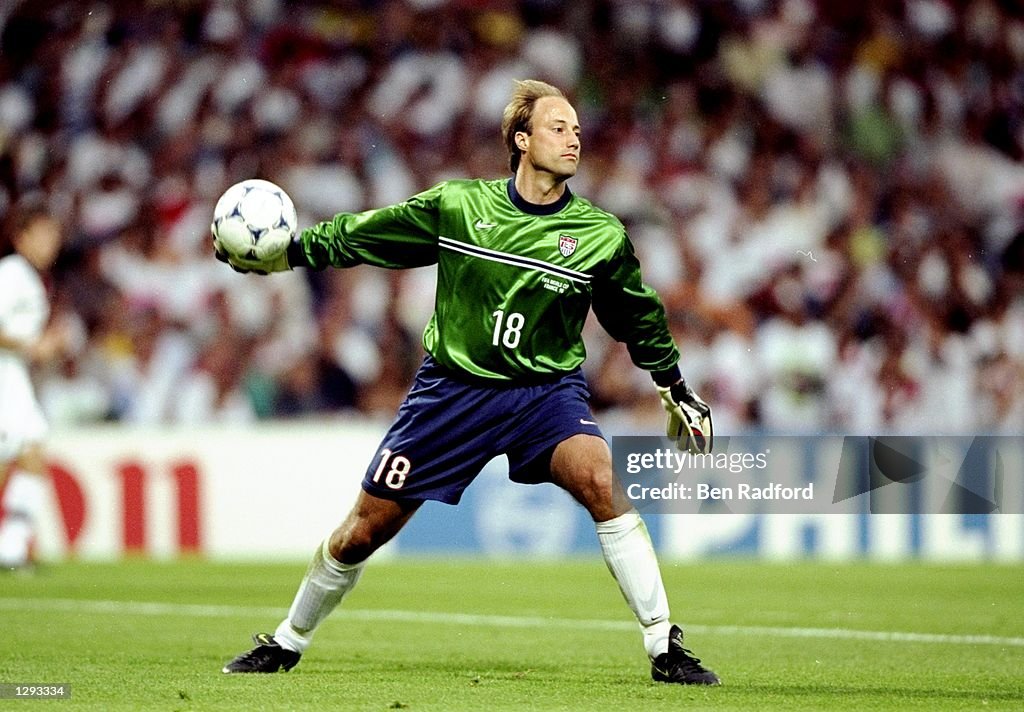
Kasey Keller, one of the backups to Tony Meola at the 1990 World Cup, was left off the 1994 roster but later reestablished himself in the USMNT picture. He went on to become the primary starter for the 1998 and 2006 World Cups and served as the backup on the 2002 team.
Creator: Ben Radford | Credit: Getty Images
First Cap (Age) – February 4, 1990 (20 years, 2 months & 6 days)
World Cup 1998 (Age) – (28 years, 6 months, 15 days)
Overall Stats heading into the World Cup
Matches Played – 34
Matches Started – 33
Minutes Played – 2,790
Wins – 18
Shutouts – 16
World Cup Qualifying Stats
Matches Played – 9
Matches Started – 9
Minutes Played – 810
Wins – 5
Shutouts – 6
Brad Friedel – 2002 Korea/Japan World Cup
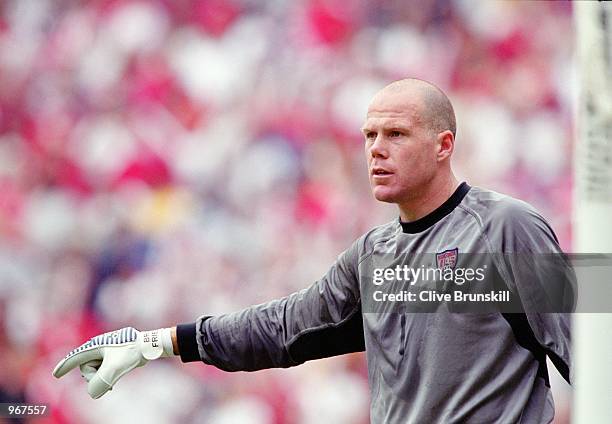
Creator: Clive Brunskill | Credit: Getty Images
Brad Friedel, who started all five U.S. matches at the 2002 World Cup and made one start in 1998, earned a place on three USMNT World Cup squads during his career.
First Cap (Age) – September 3, 1992 (21 years, 3 months, 16 days)
World Cup 2002 (Age) – (31 years, 0 months, 5 days)
Overall Stats heading into the World Cup
Matches Played – 76
Matches Started – 74
Minutes Played – 6,453
Wins – 25
Shutouts – 23
World Cup Qualifying Stats
Matches Played – 13
Matches Started – 13
Minutes Played – 1,125
Wins – 7
Shutouts – 4
Tim Howard – 2010 South Africa

Creator: Ronald Wittek | Credit: Alamy
Tim Howard, the oldest first-time World Cup starter among this group, may also be the most accomplished. He appeared on three World Cup rosters, and likely would have made a fourth had the USMNT qualified in 2018.
First Cap (Age) – March 10, 2002 (23 years, 0 months, 4 days)
World Cup 2010 (Age) – (31 years, 3 months, 12 days)
Overall Stats heading into the World Cup
Matches Played – 51
Matches Started – 50
Minutes Played – 4,185
Wins – 31
Shutouts – 23
World Cup Qualifying Stats
Matches Played – 16
Matches Started – 16
Minutes Played – 1,440
Wins – 12
Shutouts – 8
Matt Turner – 2022 Qatar
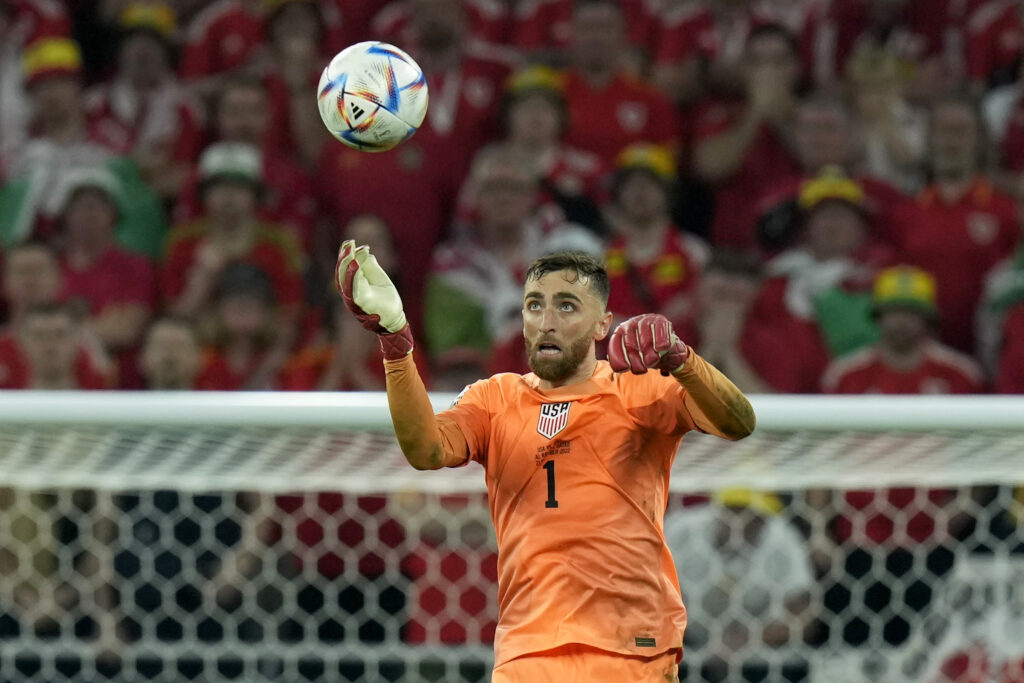
Creator: Francisco Seco | Credit: AP
Turner seized his opportunity when an unwell Zack Steffen was forced off the roster to start the World Cup qualifying, stepping in to start the first of eight World Cup qualifiers. His performances solidified his place as the USMNT’s starting goalkeeper for the 2022 World Cup.
First Cap (Age) – January 31, 2021 (26 years, 9 months, 3 days)
World Cup 2022 (Age) – (28 years, 4 months, 21 days)
Overall Stats heading into the World Cup
Matches Played – 20
Matches Started – 20
Minutes Played – 1,800
Wins – 14
Shutouts – 14
World Cup Qualifying Stats
Matches Played – 8
Matches Started – 8
Minutes Played – 720
Wins – 4
Shutouts – 4
Matt Freese
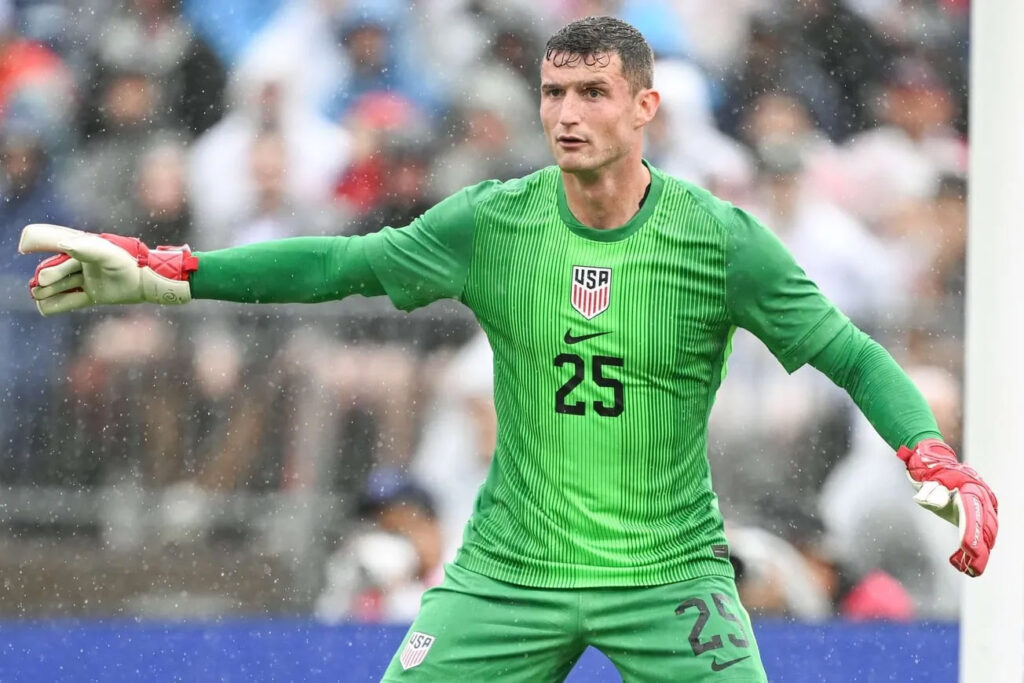
Courtesy USMNT
Matt Freese would have the shortest runway of any USMNT goalkeeper, from earning his first cap to potentially starting at a World Cup. He would also become the first U.S. keeper to start at a World Cup without having played a single World Cup qualifier.
First Cap (Age) – June 5, 2025 (26 years, 9 months, 3 days)
World Cup 2026 (Age) – (27 years, 9 months, 12 days)
Overall Stats heading into the World Cup
Matches Played – 13
Matches Started – 13
Minutes Played – 1,170
Wins – 7*
Shutouts – 3*
World Cup Qualifying Stats
Matches Played – n/a
Matches Started – n/a
Minutes Played – n/a
Wins – n/a
Shutouts – n/a
It’s clear the USMNT doesn’t have a true front-runner in goal even though Mauricio Pochettino currently leans toward Matt Freese, but as we’ve seen, things can change fast. Matt Turner, Patrick Schulte, Chris Brady, Roman Celentano, and Jonathan Klinsmann will all need to push hard to earn their place on the final roster.
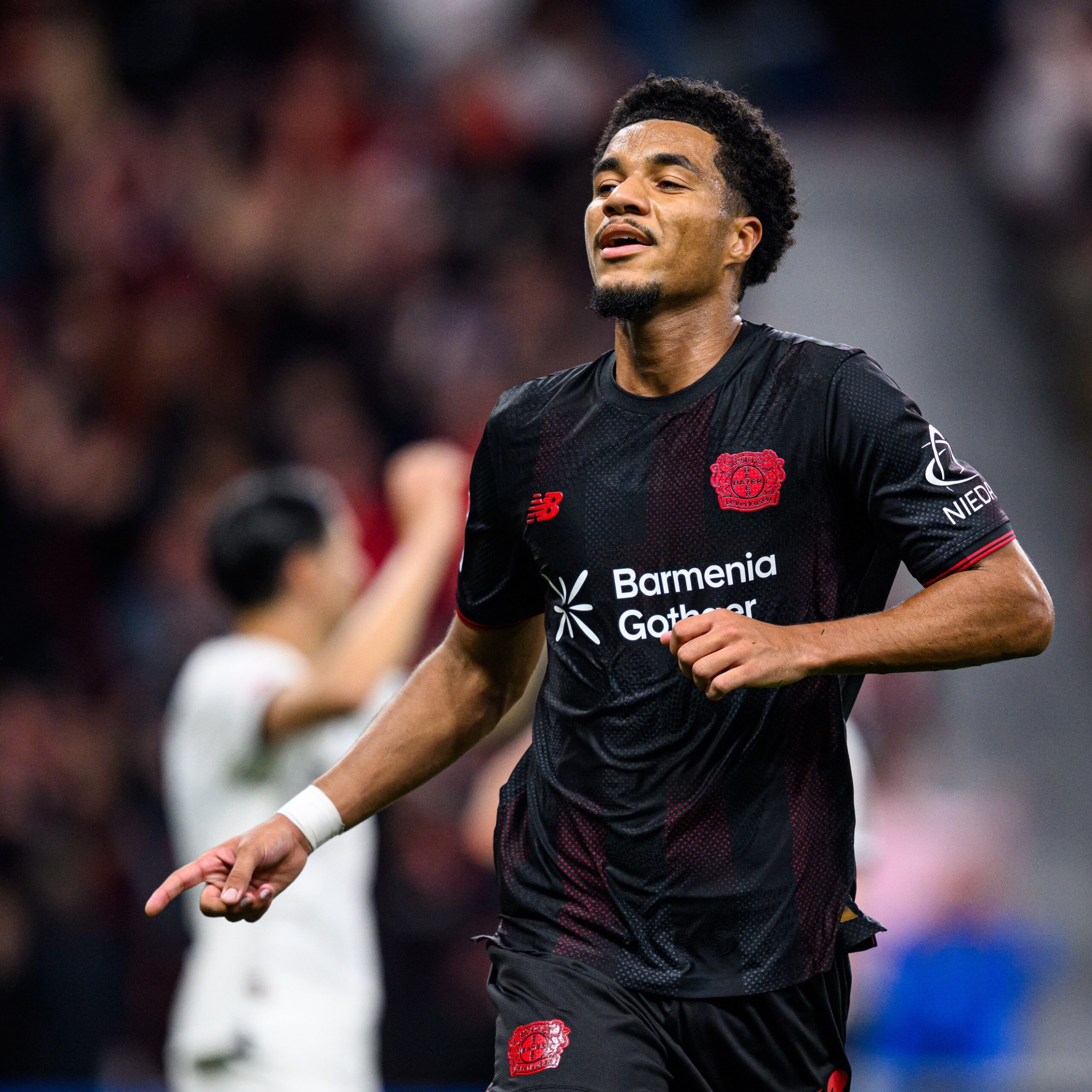
Last year, I wrote a stock-up/stock-down article covering ten Americans who either made a move to Europe or to the U.S. We are closing in on New Year’s and about 6 months until the World Cup (June 11th, 2026), giving us enough data to know if these transfers have been beneficial not just for the players’ club careers, but to make it onto the USMNT for the World Cup. As American soccer players, this season is the most important season of their international career. The players are making one last argument for them to be at a USMNT camp and be part of the team when the United States of America co-hosts the FIFA World Cup. So far, a lot of the European transfers have not gone so well, compared to the domestic transfers.
*All information is up to date as of December 1st, 2025.
Yunus Musah to Atalanta (loan)- Stocks Down

When Massimiliano Allegri took over AC Milan, he cleaned house. Twenty-four players were permanently transferred out of the club or sent on loan (some for positive reasons and others, not so much). Yunus Musah happened to be one of those 24 players. AC Milan sent Musah on loan to fellow Serie A club, Atalanta, with an option to buy that is worth $28 million. As things stand, it does not look like Atalanta will trigger their buy option at the end of the season. Musah has only one start and has appeared in 9 matches (a total of 203 minutes) while being available for a total of 16 matches since joining the Nerazzurri. When it comes to goal contributions, Musah has only one assist coming from the Champions League match against Club Brugge. When it comes to passing, Musah’s accuracy has not been bad (83.5%), but he is lacking in chances created with only 3.
He has never been known for scoring goals, but his total shots this half of the season are as low as 0.6. As for his defensive work, it has been average. He has only 2 interceptions, has lacked successful tackles (25% success rate at 1/4), and he has committed a penalty. The only positive is his ball recovery rate, which is at 16. Statistically, the only areas where he sees positive results have been in his dribbling (60% completion) and duels won (59.5%). From Atalanta’s standpoint, if he is offering little in the final third and in your defensive half, then what is the purpose of starting him? As for the USMNT, his poor form at his club has not gone unnoticed by Mauricio Pochettino. The last time Musah received a call-up to the USMNT was for the Gold Cup, which he turned down and that could be a contributing factor to why he has not been called up since. Others in the midfield, and at right wing, have been able to stake their claim onto the team. At this point, we will not be seeing Yunus Musah make it onto the 26-man team this coming summer.
Johnny Cardoso to Atlético Madrid- Stock Down

One of the biggest transfers this past window for an American, and one of the closest followed transfers in Spain, was Johnny Cardoso’s $35 million (according to Goal) move to Atlético Madrid on a 5-year deal. Johnny was coming off a solid season with Real Betis that showed a promising career in Europe. He collected 4 goals and one assist as a defensive midfielder. In just two months of being at Real Betis, Johnny won the LaLiga U23 Player of the Month for February 2024. Fast forward to today, due to his lack of opportunities with Atleti and his USMNT form, his hopes of being at the World Cup are fading.
During pre-season, he made his way onto the starting XI for Atleti starting in the first three matches of the season. Sadly, he picked up an ankle injury that led him to miss 9 matches. Since returning on September 13th, 2025, Johnny went 5 matches without receiving a single minute. Diego Simeone has opted to go with veteran player, Koke, to start alongside Pablo Barrios and Conor Gallagher as the substitution. He finally got his chance when Simeone named him on the Starting XI in their UCL match against Inter Milan on November 26th, 2025. For someone who had not played a single minute since August, Johnny had a good game in the 59 minutes he received. When we look at the stats from those four matches, there were positives. His pass accuracy sits at 77% with 62% total duels won. Johnny also completed 67% of his dribbles, had 4 interceptions, 2.65 tackles per game, 9 clearances, and 9 balls recovered. Obviously, stats alone will not keep you on the pitch and the performances of the other midfielders as of late have made it difficult for Johnny.
Atleti fans on social media are happy with his performances, believe he should be a starter, and believe he is an important player to the team. Time is running out for him at the international level though with the final USMNT friendly camp coming up in March. He must make an argument for himself to get into that camp to get one last shot at the World Cup. If Johnny builds on his performance from the Inter Milan match, he could see himself in that final camp.
Paxten Aaronson to Colorado Rapids- Club: Stock Down

This will be seen as controversial by many MLS fans, but Paxten receives a stock down mostly because the move has not improved his chances of making it onto the USMNT and the impression that his career has regressed. Eintracht Frankfurt’s sporting director, Timmo Hardung, said, “With a view to the 2026 World Cup, which is taking place in his home country, among others, he made the request to take his next step at the Colorado Rapids.” During the Gold Cup, we saw 16 MLS players take part in the campaign. Paxten only received 58 minutes in total, when you include the friendly against Switzerland. It was the only camp he was called up to in 2025. We saw the likes of Diego Luna, Brian Gutierrez, Jack McGlynn, Luca de la Torre, and Sebastian Berhalter were either getting called up ahead of him and/or receiving more minutes than he was at the Gold Cup.
It set a precedent that no matter how well you perform in a top seven league, like the Eredivisie, the performance of those in the MLS will outweigh yours. In Paxten’s case, he had 8 goals and 4 assists in 30 starts for Utrecht, helping them finish 5th in the top Dutch league. His performance at Utrecht was enough for him to be part of Eintracht Frankfurt’s 2025/2026 campaign, who is competing in the UCL, part as stated by Hardung, Paxten submitted a transfer request to join Colorado Rapids. Yes, Paxten is getting regular minutes at Colorado instead of being a bench player, but he is coming back to MLS after just 2 ½ years in Europe. Despite receiving 571 minutes, Paxten only scored one goal and got 0 assists. It was not enough for Poch to give Paxten another chance with the USMNT, and the transfer had been all for nothing.
Malik Tillman to Bayer Leverkusen- Stock Up
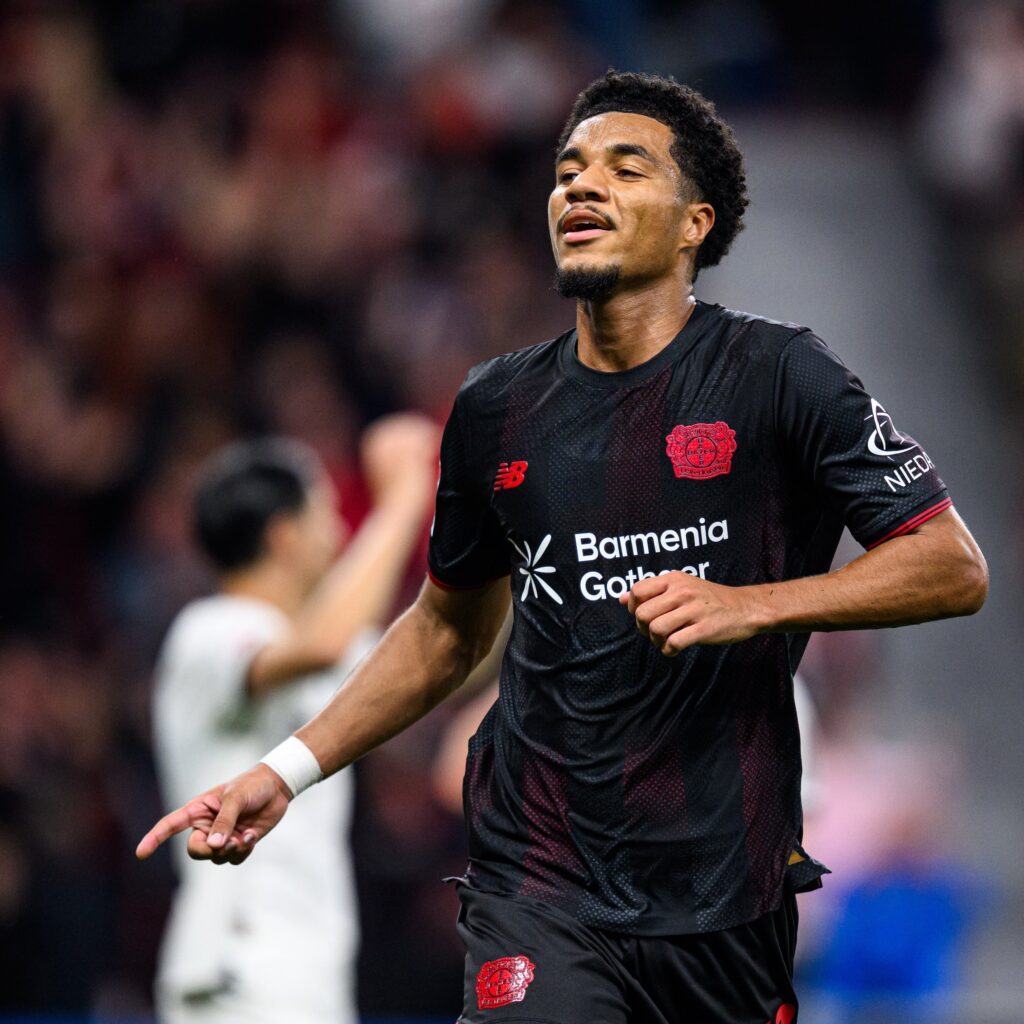
Three seasons ago (the 2022/2023 season), Malik Tillman left the Bundesliga after agreeing to a loan deal to Rangers F.C. from Bayern München. For the following season, Tillman went on loan to PSV Eindhoven, which became a permanent deal. This season, he is back in the Bundesliga, but this time with Bayer Leverkusen. In his debut match for Die Werkself, he scored a goal at the 35-minute mark. It has been a slow start for Tillman in the G/A department with only 3 goals in 12 matches, but there are still many positives to this move that show he can make it in the Bundesliga. When available, Tillman started in 10 matches, 3 of which have been UCL matches, and a total of 815 minutes played. Right now, Tillman has 1.50 xG in the Bundesliga with 187 goals per minute.
He also has a goal conversion of 25% to add on top of that. Outside of scoring, his pass accuracy is at 85%, but he has 0 assists and only 6 chances created. Defensively, Tillman has intercepted the ball 8 times, recovered it 33 times, 3 blocked shots, and has a success rate of 79.9% (18/24) tackles. Additionally, he has won 50% of his duels. A major reason why Tillman gets a stock up is because of one reason, he is playing consistently at a high level. Diego Luna is in the MLS and towards the end struggled with his production (it also did not help when Tillman looked like the better 10 in the Gold Cup).
Paxten would not be a starter for Eintracht Frankfurt if he had stayed and he took a step backwards. Gio Reyna is in the Bundesliga as well and is one of our most talented players, but he only has 189 minutes for Mönchengladbach. Despite Tillman’s continued issue of performing consistently, the fact he is getting regular minutes at a top five league club and finally performing for the USMNT, has locked him in as the #1 CAM for the U.S. at the World Cup.
Damion Downs to Southampton- Stock Down
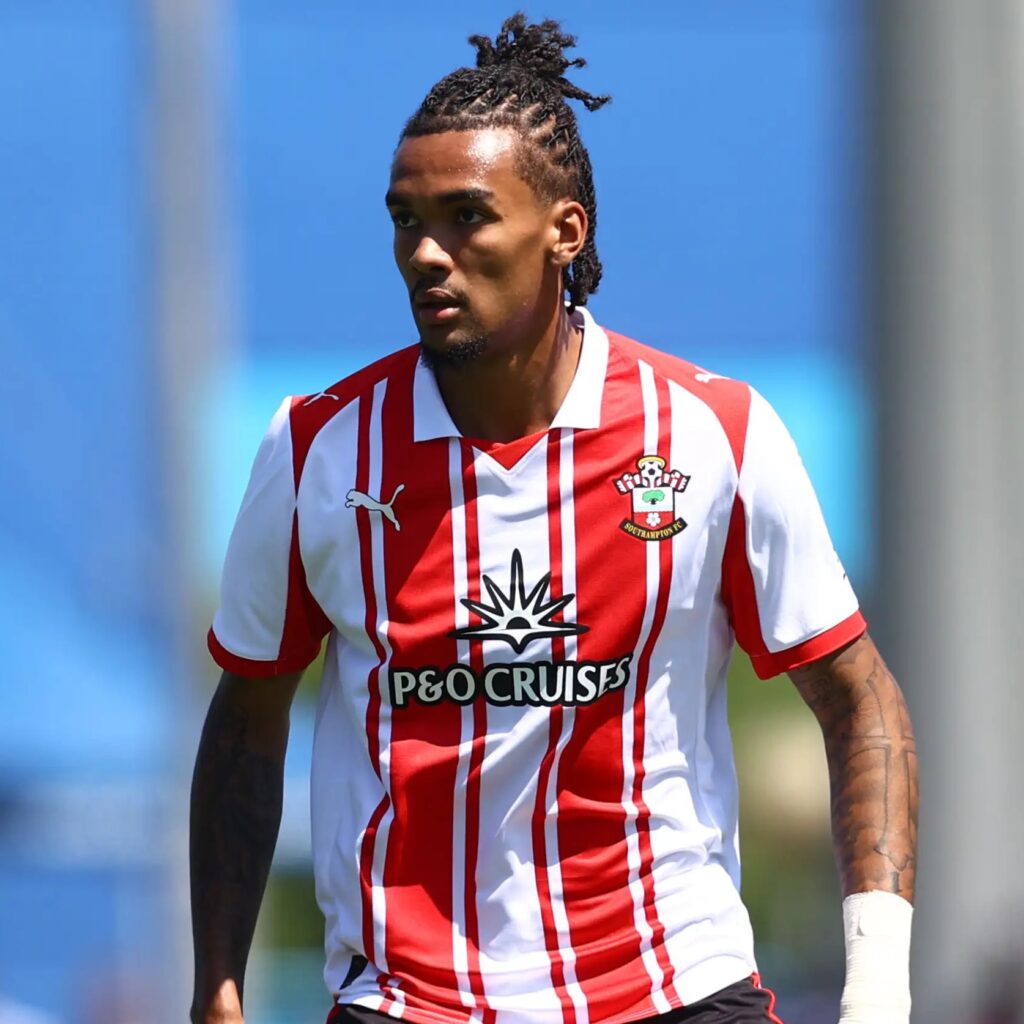
Damion Downs scored 2 goals in 179 minutes just shy of turning 20 years old. He followed this up with 10 goals and 3 assists in his first full season in a professional league when FC Köln was relegated to the 2. Bundesliga. FC Köln won the league and with-it promotion back into the Bundesliga. Downs contribution to the campaign got him a move to English Championship club, Southampton. Anyone who understands English football and Southampton’s striker depth knew this was a risky move. Prior to Downs joining, the club had Cameron Archer, Adam Armstrong, and Ross Stewart. So far, the transfer is going poorly and that is disappointing for a promising player. In 395 minutes, Downs has only one assist and gone 2 matches as an unused substitute. To make matters worse, he has only been on the matchday team sheet 16 times out of the possible 21 matches (Downs missed one match due to illness).
This move was not only important for Downs’ domestic career, but also his international career. During the 2024 Paris Olympics, Downs tried out for the U.S. Olympic team, but Marko Mitrović cut Downs from the team just before the Games. This led him to join Germany’s U20 to take part in their U20 Elite League campaign. It took Pochettino to give him an opportunity at the 2025 Gold Cup for Downs to rejoin the U.S. The goal for Downs would be to take that third striker spot with the USMNT this coming World Cup. Looking at his club form, that will not happen.
If you are looking for any positives, there are two. One, Downs is only 21 years old, so there is still plenty of time to recover his domestic career. Second, Downs is not the only striker at Southampton that has been struggling. Ross Stewart and Cameron Archer only have 2 goals, and one assist each this season. There is still the second half of the season to recover to possibly slide into the 2026 World Cup roster. If not, there is still the 2030 World Cup, which he will be 26 years old.
Patrick Agyemang to Derby County- Stock Down
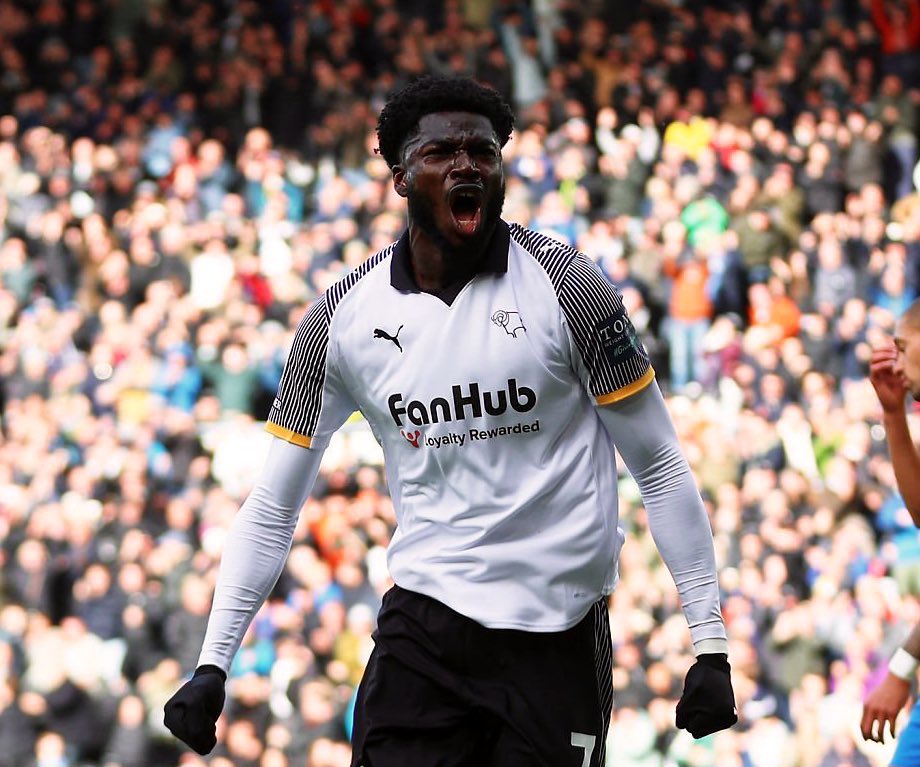
When the Gold Cup campaign began, Patrick Agyemang started all but one match, when you included the two friendly matches. Prior to the Gold Cup, Agyemang was part of ‘Camp Cupcake’ and the Nations League finals in March. In the three camps, he scored five goals. Many fans and pundits were calling him to be a lock for the USMNT and that appeared to be certain after the Gold Cup, but that is where it ended for him. For the September camp, Folarin Balogun, Josh Sargent, and Damion Downs were selected over Agyemang. Hope returned when he was called in for the October camp, but he did not receive a single minute in the two matches.
Then came the November camp where he did not get the call from Pochettino. What could have happened that led him to fall out of favor with Pochettino? There are two reasons: Balogun and Pepi have returned from injury, and Agyemang has been in poor form at Derby County. In 11 starts and 953 minutes played, Agyemang has only 3 goals and 3 assists. In comparison, fellow American and Championship player, Haji Wright has 9 goals and 2 assists in 14 starts. To make matters worse, Agyemang has 318 goals per minute, and his goal conversion is a meager 11%. His passing has not been the greatest sitting at 69% accuracy, but Agyemang is just short of creating a chance per game at 0.9 (13 chances created). Besides having a poor goal conversion rate, his ball retention is also poor. Agyemang has lost 66% of his duels and losses possession 11.2 per game.
Before his move to Derby County, Agyemang scored 8 goals in the current MLS season and finished last season with 10 goals. The move has not only been a stock down for him domestically, but also internationally. Agyemang needs to find his form quickly or he will not be part of the USMNT again this World Cup cycle.
Benjamin Cremaschi to Parma (loan)- Stock Down
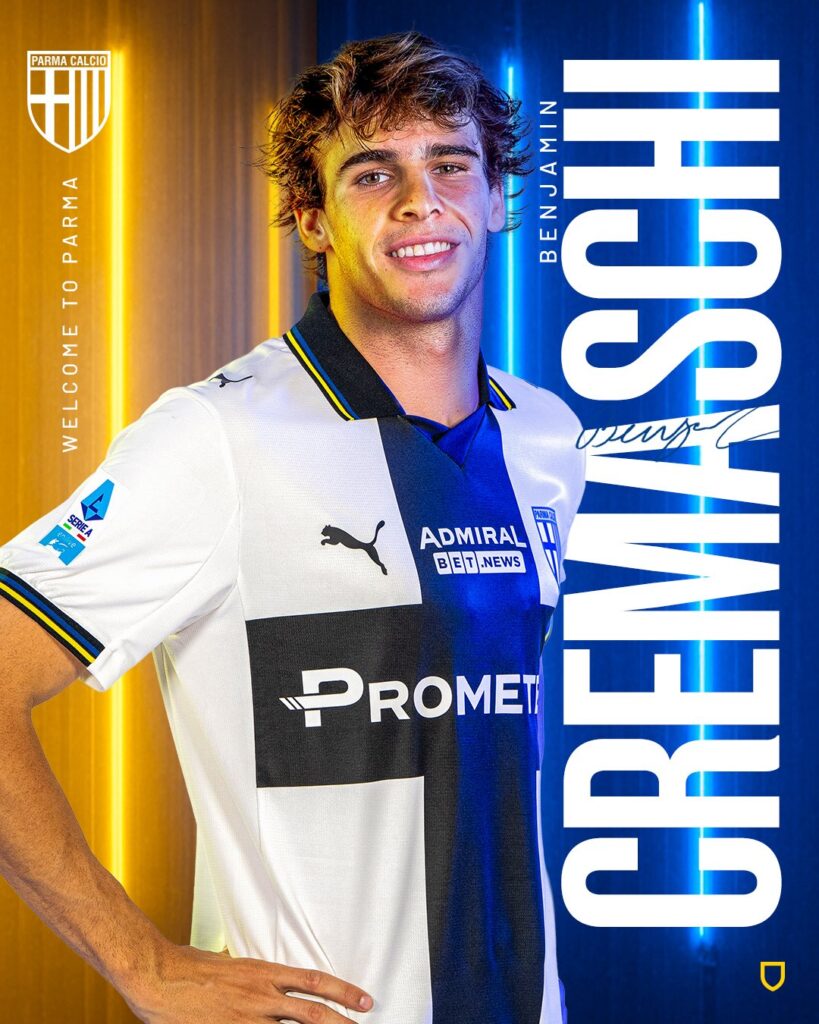
Benjamin Cremaschi was someone whose chances of making it to the World Cup were slim, but he took part in ‘Camp Cupcake’ and performed well in the U20 World Cup. Prior to the U20 World Cup, Cremaschi had yet to make his debut since joining Parma on loan at the end of the summer transfer window. After winning the golden boot at the U20 World Cup, Cremaschi got his debut, but he has only clocked in 14 minutes in 2 matches. On seven different occasions, Cremaschi has been an unused substitution by Carlos Cuesta. The loan deal includes a buy-option and so far, it does not look like Parma will exercise that option. Cremaschi needs to find his way on to the pitch to convince Parma to make the move permanent.
The move at first gave some hope that he could get back into the USMNT picture and his showing at the U20 World Cup reinforced that. Since he has not even reached 25 minutes in Serie A with barely any data and footage to go on, his chances at the World Cup are even less now. Cremaschi would have to try again during the 2030 World Cup cycle.
Timothy Weah to Marseille (loan)- Stock Up
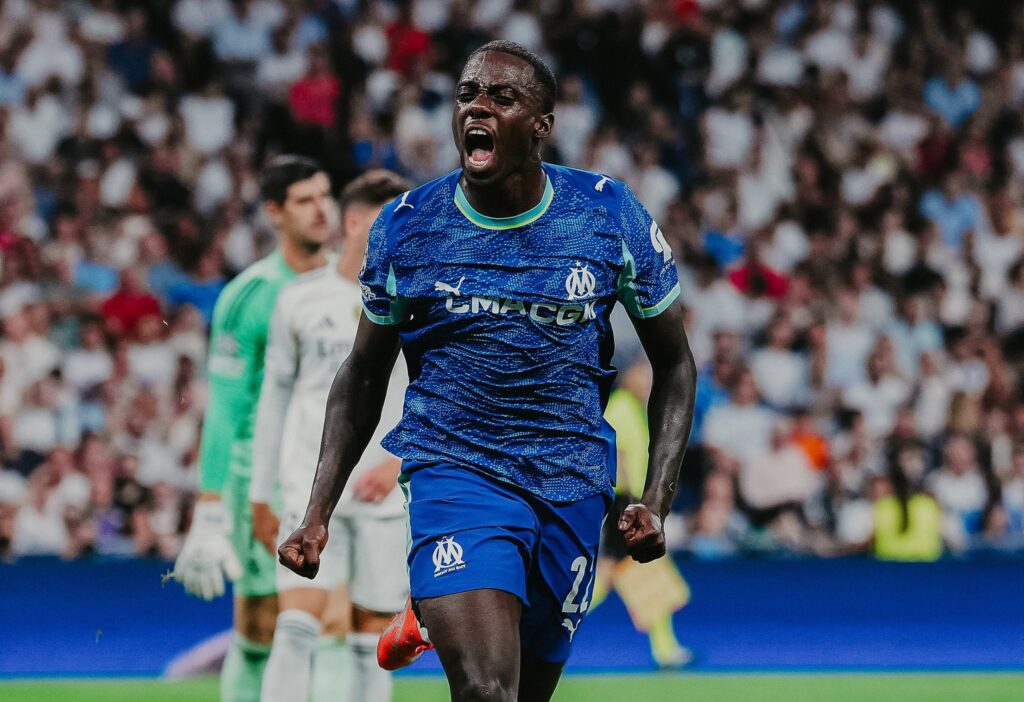
Even though Tim Weah set a personal record for goal contribution with 10 goals and assists, he only started in 24 matches. Now, he is on loan where his dad spent a spell at Marseille. The loan has worked out for Weah so far, starting in 12 of the 15 matches he has appeared in. Currently, Weah has 2 goals and 2 assists with a goal conversion of 23%. His passing accuracy is at 87% with 15 chances created. Weah’s defense has been decent with 59.1% tackles completed, 35 recoveries, and 15 clearances. The one stat that has been negative for him is his duels at 50%, which is not too bad. The move back to Ligue 1 has been beneficial to not just his playing time, but more fitting to his playing style.
Weah is still in the USMNT picture and there should be no doubt that he will be at the World Cup. The question is, at what position? Weah has been playing all along the right side for Marseille, mostly at RB. Now that the USMNT is using a 3-4-2-1, Weah is fighting with Sergiño Dest for that starting RWB spot. If Pochettino does not plan to have Weah at RWB, does he move to CAM, where the depth is deep, or to striker? It is likely that Weah would be placed at RWB, but I do not think it is a matter of being #1 or #2. Depending on who our opponent in the World Cup is would decide if Poch starts Weah or Dest.
Kristoffer Lund to 1. FC Köln (loan)- Stock Up
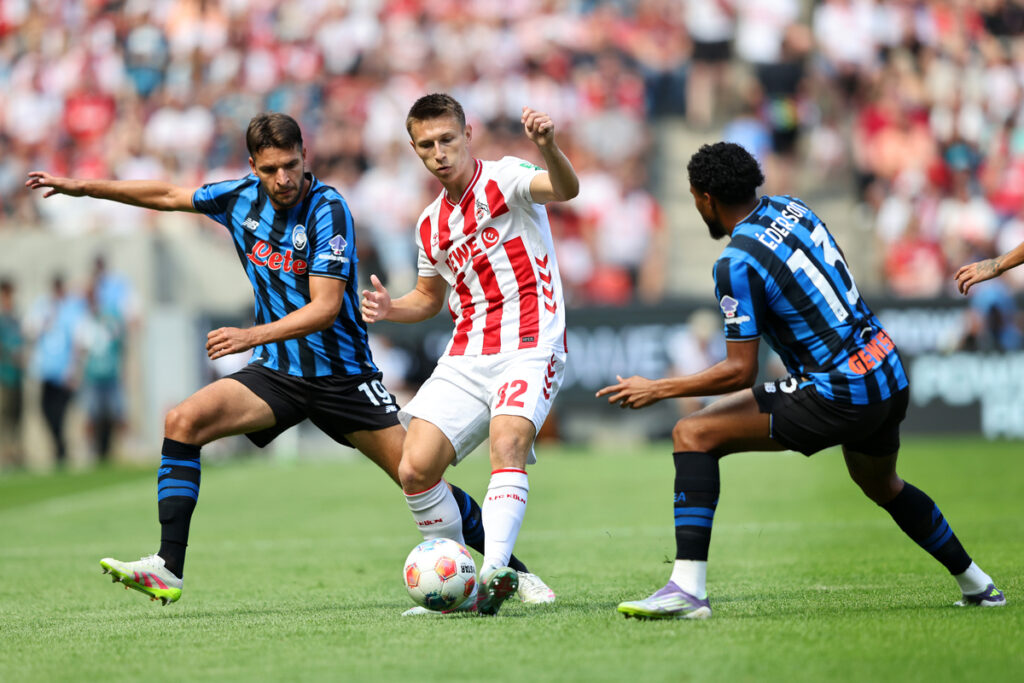
A surprise transfer over the summer came from Kris Lund when he joined FC Köln in the Bundesliga on loan. Lund started off strong when he joined Palermo in Serie B back in 2023/2024, but last season he struggled with his form and getting starts (he only started 24 of the 35 matches he appeared in). That is why when the report broke out that newly promoted Bundesliga club, FC Köln, signed him on loan with a buy-option, it took U.S. fans by surprise. It has been up and down for Lund since joining Köln, but the club is midtable and will likely avoid relegation. Lund has also been starting consistently for Die Geißböcke with 10 starts out of 14 matches. Due to him getting consistent starts for a midtable Bundesliga club, many USMNT fans have suggested that Pochettino should give Lund another chance.
That has not happened, either because there is something about his club performance that has not impressed Poch to call him up over John Tolkin and Max Arfsten, or Lund’s performance back in the October 2024 camp that left a bad impression. Looking at his stats, Lund has not really done anything offensively and that could be a reason why he has not gotten another look by Poch. His xG is at a low of .20 while his xA sits at .41. Lund did get his first Bundesliga assist recently in Köln’s match against Werder Bremen. Lund’s passing has not been too bad with an accuracy of 72.5%, but his chances created are only at 6. Defensively, he is doing better where he has 10 interceptions, 95.8% (9/12) completed tackles, 31 recoveries, and 36 clearances. A major negative in his records is that he has committed two penalties.
The loan has been good for his domestic career and caught the attention of USMNT fans again. If we are giving a midtable 2. Bundesliga player call-ups, then a midtable Bundesliga player should get another opportunity. It is doubtful that Lund will be at the March camp and at the World Cup. The LWB position will likely be covered by Antonee Robinson and Arfsten, one who has been reliable for us since the 2022 cycle and the other who has a 6 G/A this year. He is 23 years old, so there is always the 2030 World Cup. Lund simply needs to end the season on a positive note, make his move to Köln permanent, and then perform consistently throughout the next cycle.
Honorable Mention
George Campbell to West Brom Albion- Stock Up

Another surprise transfer was when George Campbell left Montréal for English Championship side, West Brom. So far, it has not gone too badly for him. While healthy, he has started in 13 matches with a total of 1,259 minutes. Campbell has collected 2 clean sheets with 9 interceptions, 81.94% (21/30) successful tackles, 47 recoveries, 73 clearances, and 8 blocked shots. The only major negative defensive stat Campbell has is committing one error that led to a shot. He has been successful with his passes by completing 89% of them, but Campbell’s duels have been average, winning 50% of all duels.
Like Lund, Campbell recently got his first English Championship assist in West Brom’s clash against Swansea off the bench. Due to the USMNT’s current lack of quality CBs, there were fans suggesting that Pochettino call up Campbell to give him a shot. The thing is though, Campbell has mostly played at RB, a position that is covered by Sergiño Dest, Alex Freeman, and Joe Scally. On the upside, Poch has moved to a back 3, which could give Campbell access to the USMNT. It is doubtful that he will get a chance at the March camp, but he is only 24 years old, and he is now in Europe where he can continue to develop. The 2030 World Cup is still a reality and that is why he gets a stock up.

USL made national headlines when they announced on February 13th, 2025, their plans to launch a Division One league, followed by the announcement of promotion/relegation on March 19th for the new Division One league, the Championship, and League One. If sanctioned by US Soccer, USL Division One would be of equal status to MLS and compete for the best major soccer league in the U.S. The implementation of promotion/relegation in the USL would become the first in the U.S. and test the question asked for many years, “would pro/rel work in the U.S.” USL HQ informed the public that they planned to have the inaugural season of Division One during the 2027-2028 season with promotion/relegation beginning in 2028.
Until November 3rd, with the announcement of Tony Scholes being hired as the President of the Division One, only three teams have applied for membership to the inaugural season of Division one: Louisville City, North Carolina FC (who announced at the time of the Scholes news that they would fold until the launch of Division One), and Pittsburgh Riverhounds. There has been a rapid expansion of teams in the already existing leagues since the two announcements. Teams joining League One are: Fort Lauderdale FC (2026 debut), New York Cosmos (2026 debut), Port St. Lucie SC (2027 debut), Sporting Cascades FC (2026 debut), and Rodeo FC (2027 debut). Fort Wayne FC and Sarasota Paradise would also be joining League One from League Two (2026 for both teams). For the Championship, Reno, NV will once again have a team planned for a 2027 debut. Along with those teams, USL is actively working to expand to other markets. The markets and partners they are looking at are Brevard County, FL (Space Coast Pro Soccer), Riverside, CA (Riverside Pro Soccer), Brownsville, TX (City of Brownsville), Winter Garden, FL (Central FL Pro Soccer), Santa Rosa, CA (City of Santa Rosa), and Pensacola, FL (City of Pensacola).
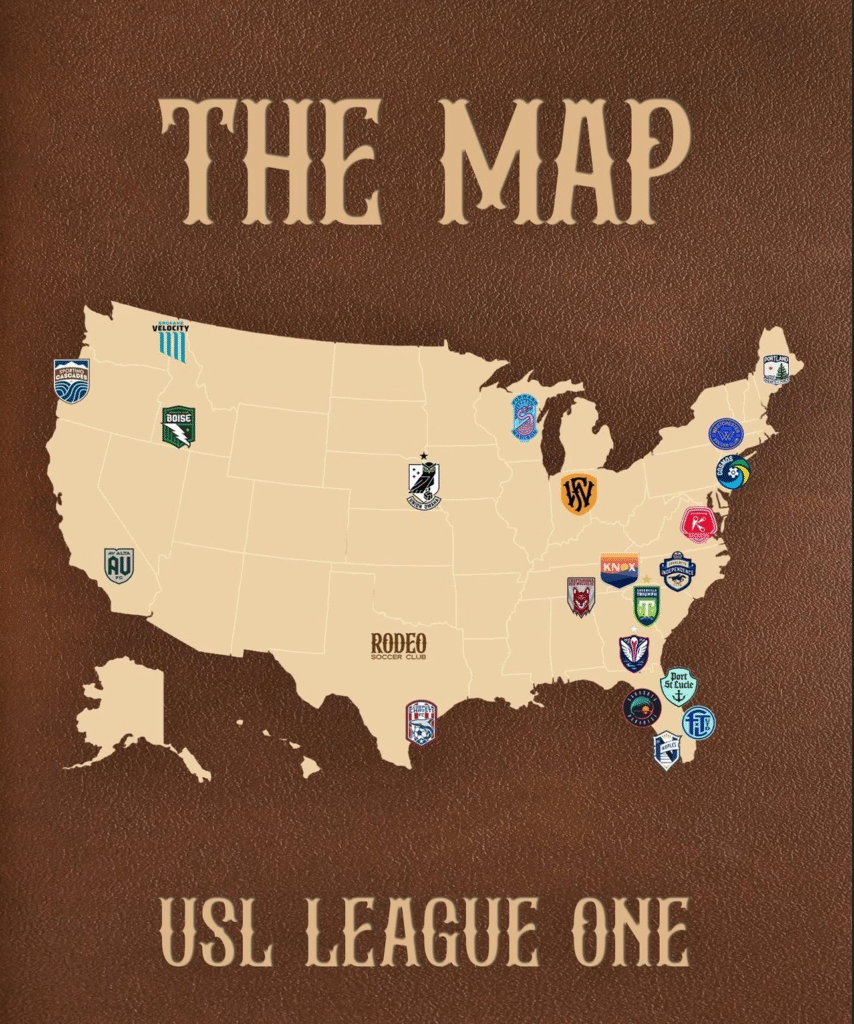
Along with these recently announced teams and partnerships, USL has teams joining the organization just in time for promotion/relegation that were announced prior to the February and March news. Starting with League One, these teams include: Corpus Christi FC (2026 debut) and Athletic Club Boise (2026 debut). As for the Championship, they will be adding Brooklyn FC (2026 debut), Sporting Jax (2026 debut), Atlético Dallas (2027 debut), Milwaukee Pro Soccer (TBD), USL Pro Iowa (TBD), Buffalo Pro Soccer (TBD), and Ozark United FC (2027 debut), while Santa Barbara Sky FC (2027 debut) would replace Memphis 901 FC.
Other than that, news on the Division One and promotion/relegation had been quiet until USL snatched Tony Scholes from the English Premier League. Tony Scholes will be the President of Division and help with the implementation of promotion/relegation. Scholes served as the chief football officer of the EPL and will join USL at the end of the EPL season. As of November 15, 2025, USL Division One has not been sanctioned as a division one league by US Soccer. The hiring of Scholes indicates that they are confident this new league will get approved or they have already been told it will, behind closed doors. The fact that we have not heard news on what the promotion/relegation format would be, and Scholes task would be to help implement it could mean that USL has not come to a decision on one. Since we do not have any ideas on what the format could be, I want to provide a possible option that they could go with.

One of the biggest questions people have had since the USL announced promotion/relegation was how they would tie it to the playoffs. There is an option they could do, but it would result in only having one playoff. USL would have a playoff for Division One, but they would eliminate the concept for the Championship and League One. It might not be the most popular idea here in the U.S., but the main goal for the lower leagues is to get promoted, not to win a trophy. They would retain the league title for those two leagues with the winner being the team with the most points at the end of the season, just like how it is in the European leagues. The purpose is to create fairness for the top performing team(s) in the two lower leagues and reduce confusion. If there is a need for a playoff format, they could adopt the format the Bundesliga uses where the 16th best team in the first division and the 3rd best in the second division face-off in a two-leg match to see who would be in the first division the following season. The other option is the Championship concept, where the teams who finished 3rd through 6th in the table compete in a promotion playoff. The semi-finals are two-leg matches while the final is a single-leg match. The winner is promoted to the EPL. The execution of promotion/relegation must be done perfectly to retain fans, gain fans, prevent confusion, and be entertaining.
USL already has a division one league with their women’s Super League, who is competing against the NWSL. Currently, the S League has only nine teams (Brooklyn FC, Carolina Ascent FC, Dallas Trinity FC, DC Power FC, Ft. Lauderdale United FC, Lexington FC, Spokane Zephyr FC, Sporting Jax, and Tampa Bay Sun FC) to the NSWL’s 14 teams (3 teams in the works). The Super League will be adding an additional nine teams (Athletic Club Boise, New York Cosmos, Ozark United FC, Buffalo Pro Soccer, Chattanooga Red Wolves FC, Forward Madison FC, Indy Eleven, Oakland Soul SC, and USL Palm Beach) with all but three to have their inaugural season to be determined. What makes the S League unique from the rest of the soccer leagues in the U.S. is that they use a fall-summer schedule. Competing against a top five women’s league in the world is a tall ask, but it shows the ambitions of USL.
They are also willing to take risks by voting to pass promotion/relegation for the men’s league and have a fall-summer schedule for the S League. If the S League schedule format proves successful, it stands to reason that they would move the men’s leagues to the same schedule. It would also avoid the organization from having to fight MLS for viewership when the leagues are in play, especially when they launch a direct rival and are at their most ambitious point in their history. The same can be done for the S League if promotion/relegation is successful for the men. USL can start establishing lower women’s leagues and introduce promotion/relegation to the women’s game here in the U.S.
Many would say USL still stands no chance at competing against MLS, even with promotion/relegation and having a division one league. That is the case when you look at the quality of the players is finance, but that is the reason why the USL made these decisions based on the reports prior to the announcements and afterwards. Promotion/relegation and the introduction of a division one league could see an increase in investors. We are already seeing that with the likes of Gio Reyna joining Fort Lauderdale as an investor, BellTower Partners investing into USL, Sofia Huerta and Kasey Keller joining the Athletic Club Boise ownership group, and the Chickasaw Nation becoming an investor of the OKC for Soccer just this year alone. Then there is the expansion fee for MLS, MLS Next Pro, and the USL leagues. MLS charges an astounding $500 million! Yes, the money is used to construct a proper stadium, acquire players, etc., but at this point it will discourage many from purchasing a franchise license. MLS currently only has two leagues and one of them is advertised as a development league to prepare for MLS. The expansion fee for an independent team to join MLS Next Pro is unknown, but Sports Business Journal reported in 2024 that it is significantly cheaper than the USL Championship. The fee to join the USL Championship is $20 million while League One is only $5 million. These two fees are significantly lower than MLS and that will be more appealing to potential owners, but unlike the MLS fee, it is not enough for a stadium, training grounds, and players. As for what the fee is to join USL Division One, that is unknown at the moment.
I highly recommend reading the ESPN article by Jeff Carlisle titled “Will USL’s Move to Pro-Rel Change U.S. Soccer, Threaten MLS?” In there, Carlisle discusses the reasons behind the decision and that it is mostly financial. For example, a USL spokesperson said they expect to see an increase in commercial revenue by 15% to 30% due to promotion/relegation. Also, the former owner of San Diego Loyal lost $40 million in 4 seasons. As for the reaction from MLS, we have not heard one yet. The only possible reaction we have seen from them is what the former MLS Next Pro president, Charles Altchek, told to Backheeled back on March 6th, 2025. In the interview, he told them they aim to have 40 to 50 teams and a possible second league with one of the MLS Next Pro leagues being a second division, putting it in direct competition with USL Championship. The biggest question is, whichever league that is, can compete for fans? Due to the Apple TV deal, we currently do not have the ratings of MLS Next Pro. The closest idea we have is the attendance, which is 5,580 for USL Championship per match to MLS Next Pro’s 3,361, according to Transfermarkt. Unlike the attendance, the viewership for USLC is much higher where the season premiere match had 453,000 viewers. MLS Next Pro’s massive expansion plan announcement date was either a coincidence, or MLS got word USL’s promotion/relegation implementation with the division one news, and this was their response. I will let you come to your own decision.
It seems, as of right now, it appears MLS will sit back and wait to see how the USL’s Division One and promotion/relegation will play. Division One and promotion/relegation will either be successful for USL and lead them to the financial success they are hoping for or lead to the possible collapse of USL. American sports fans are not the only ones keeping their eyes on USL now, but the rest of the soccer world is after their two massive news. The coming years are going to be exciting times for American soccer!
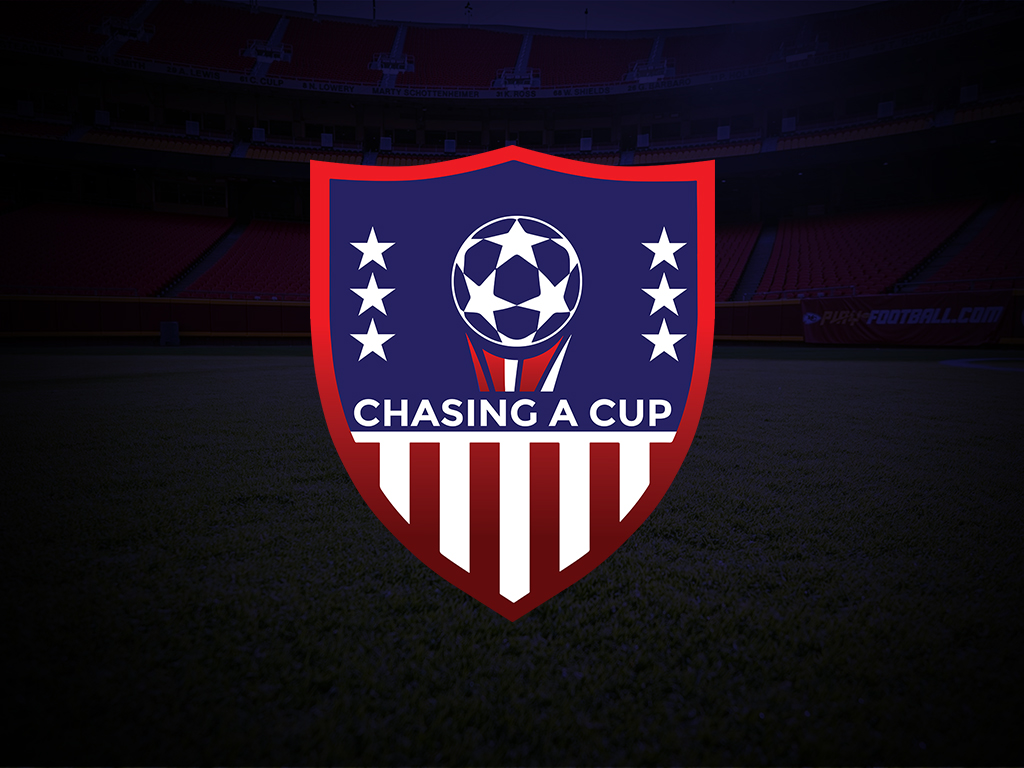

Breaking the Mold: Freese a Unique USMNT Goalkeeper

2025 Summer Transfer Window Review

USL’s American Soccer Dream

Trending
-

 Club News1 year ago
Club News1 year agoAmerican Transfers: Stock Up & Stock Down
-
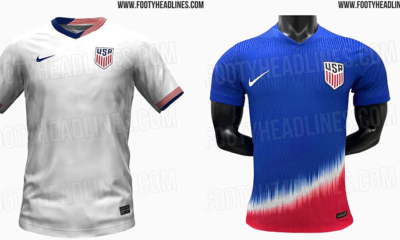
 USMNT2 years ago
USMNT2 years agoUSMNT Kits Come in Different Styles and Colors
-

 Club News6 years ago
Club News6 years agoJulian Vincente Araujo
-
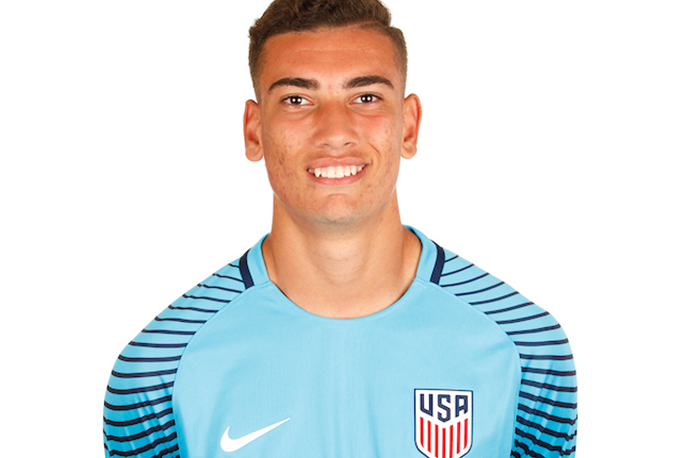
 Club News5 years ago
Club News5 years agoCJ dos Santos, Benfica
-

 USMNT5 years ago
USMNT5 years agoA Hidden Gem: Barça Residency Academy
-
USMNT3 years ago
World Cup Format History
-

 USMNT2 years ago
USMNT2 years agoIs the MLS Specifically Targeting Expansion to USL Cities?
-
USMNT6 years ago
MLS Quota


